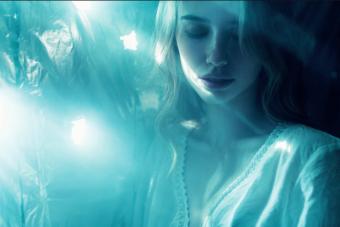
Some types of sleep disorders require a polysomnogram for proper diagnosis. Commonly known as a sleep study, the testing can detect problems that interfere with sleep.
What Is a Polysomnogram?
A polysomnogram (PSG) is a test that has multiple components that record physical activity through electronic devices while the patient is sleeping. The process may take place during the day but some tests require the patient to stay in a sleep lab overnight. The data collected during the study is used to determine whether a sleep disorder is present or not.
There are four types of polysonmograms:
- Diagnostic overnight sleep study is an overnight test that provides a chance for technicians to monitor the patient during sleep. The evaluation may lead to a diagnosis in some cases, but many patients have to follow up with another polysonmogram.
- Multiple sleep latency test (MSLT) is a daytime diagnostic test used to measure how tired the patient is during waking hours. Conditions like narcolepsy may be detected through a multiple sleep latency test. The MSLT typically follows an overnight sleep study.
- Two-night PSG is a test used to monitor the patient while sleeping. The evaluation may determine that sleep apnea is present. If this is the case, the patient has to come back for another monitoring session for CPAP titration to establish the amount of air pressure necessary for a CPAP device.
- A split night polysonmogram may be necessary if a patient has severe sleep apnea, but some patients with moderate sleep apnea may be instructed to take the test as well. If a sleep study participant's apnea is so prevalent that it is discovered quickly, the second part of the night study focuses on CPAP air pressure levels that relieve the breathing problem.
Each of the studies requires equipment that takes accurate measurements for diagnosis.
Polysomogram Equipment
Patients can expect to be attached to equipment during the sleep study. The devices are important for collecting data about physical activity while the patient is sleeping. Physical activity measured during the session include:
- Breathing - The tests determines if breathing is shallow or weak (hypopnea), and if breathing ceases completely (an apnea).
- Snoring - A test may measure the frequency, volume and vibrations that lead to snoring sounds.
- Heart activity - The heart's rhythm and rate are among the activity measured during a sleep test.
- Body positioning - A sleep study participant is usually video taped throughout the session to record body movements.
- Movements - Some subtle movements may not be readily apparent on a video. Devices may measure muscle actions that may not be obvious such as twitches, slight leg movements and teeth grinding.
- Brain activity - A main portion of the polysonmogram deals with brain wave activity, focusing on the duration and number of times that different brain waves appear.
-
- Alpha waves typically appear during a calm, wakeful state.
- Theta waves show up during stage one and two of sleep.
- Delta waves appear during deep sleep, sometimes called "slow wave sleep."
Electroencephalogram and Electrocardiogram
An electroencephalogram, commonly referred to as an EEG, is a critical device during a sleep study because it measures and records brain waves. An electrocardiogram uses electrodes on the chest area to record heart activity, including rhythm and pace.Electromyogram and Electro-Oculogram
An electromyogram (EMG) can detect REM while the patient is sleeping, noting how long the REM stage lasts as well as how frequently it occurs. An electro-oculogram (EOG) keeps track of eye activity. This device uses electrodes to detect various stages of sleep, particularly the REM stage.
Other Sleep Lab Equipment
Other equipment is used during a polysomnogram, including devices to measure breathing and movements:
- A microphone keeps track of snoring activity.
- The nasal airflow sensor records breathing activity, including airflow and temperature, and it can detect apnea and hypopnea.
- Chest and abdomen belts are elastic, used to measure how deep the patient is breathing. The belts can help detect hypopnea and apnea.
- An oximeter is a simple clip that attaches easily to a finger used to measure the amount of oxygen present in the blood.
Detecting Sleep Disorders
Sleep may appear to be a time of inactivity, but much happens while a person is asleep. The brain is remarkably active during some stages of sleep, and the body moves in subtle and overt ways. Throughout the process, activity levels change and shift; but, if these changes do not occur as they should, you may experience disruptions in sleep and daytime fatigue. A polysomnogram can be an effective way to measure breathing, brain waves, heart activity and movements that can show signs of a sleep disorder.







